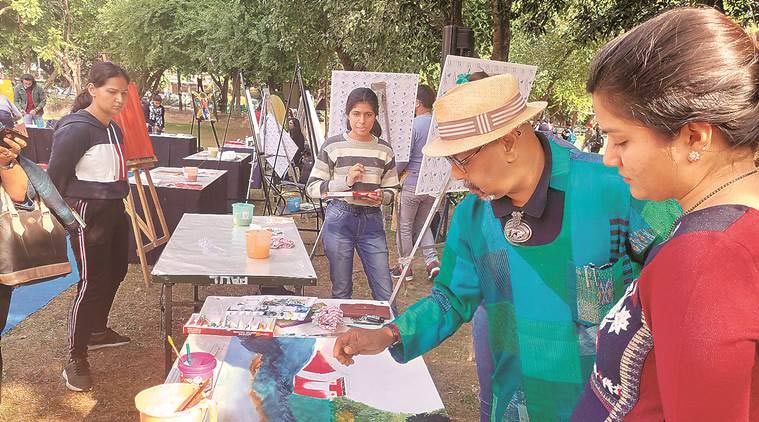‘My art is a window to my world’
Paresh Maity believes that if you can transform anything into art, you will be a success.
 Paresh Maity.
Paresh Maity.
LIFE in its many colours, expressions, and facets inspires painter, sculptor, photographer, and filmmaker Paresh Maity. That’s the reason the artist looks at every work as his life’s journey — it emerges from his myriad experiences. “Art is boundless. You can’t restrict it to paper. If you can transform anything into art, you will be a success. What you need is spontaneous and genuine effort,” said Maity, who was in Chandigarh on the invitation of Chandigarh Lalit Kala Akademi for an audio-visual presentation titled ‘The World of Paresh Maity’.
Born in 1965 in Tamluk, a small town in West Bengal, renowned for its heritage of terracotta art, Maity’s engagement with art began at school. He recalls how when he began painting, his canvas was dominated by landscapes. Since he was living in Bengal, surrounded by water, he often painted river scenes, with watercolours as his medium and with muted shades in his palette. After graduating from the Government College of Art, Kolkata, Maity joined Delhi College of Art for his masters in fine arts. This shift also gave his work a new direction. “I began to visit Rajasthan, and saw how people give colour to nature here, and it hypnotised me. I made several trips to Jaisalmer and began painting the attire, architecture, animals, folk music, everyday life and then the faces and sharp features. My work became figurative and colour began to emerge on my canvas. It was a celebration of life,” explains Maity, who has rediscovered the charm, flavour and magic of India in his paintings.
Travel is what inspires Maity’s work. He has done a series of works on different cities of the country apart from those in Europe, China, and Japan. Nature, he says, remains his muse, as light remains an important element in his work. “Light is life, and visual is what it is because of light. That’s why I work only during the day. I am a big fan of the mystic light,” says Maity, who showcased paintings which depict sand dunes, havelis, temples, homes, people in bright attires and rich colours. He also screened a short film he’d made on Rajasthan, documenting artistically, a day in the life of a village, with the play of light focusing on the many hues of the space. Colours, he adds, signify many things, as they play an important role in our lives and black, a combination of many colours, is transparent and vital for both art and life.
Taking the audience through a large body of his work in watercolours, oils, mixed media and also various disciplines such as drawings, installations, sculptures, photography and filmmaking, Maity says that as an artist, he attempts to see the essence of everything. “I will not see you, but the essence of you. If you tell everything in art, where is the imagination. You have to let the work speak and have a clear understanding of form, colour, line. There is no shortcut. As an artist, I first need to draw everything. In the process, I am practically drawing everywhere and all the time. When I draw, I reflect and understand if what I want to express will be done through a painting, sculpture, installation, or maybe, just a photograph. Life is a big circle, it grows and so do you and with it, your work transforms and takes new form,” he says.
Many of his works, says Maity, draw from memories and experiences of his life, like the element of lamps in some installations. That’s because, till the age of 18, he did not have any electric light in his village, and studied under the light of lanterns. Similarly, the use of bells is an association from childhood, be it bells in temple, around the necks of animals and the chiming he heard on his trip to Switzerland. In another installation, Maity uses empty metal cages dramatically with the sound of chickens. “I had some chickens when I was growing up, and I made a small space for them. When they gave eggs, I went to sell them and used the money to buy art material, make toys and sell them in the village to support my education. I saw these antique cages in Rajasthan and they haunted me as I wanted to create something from this memory. My art is a window to my world, which I want to share through varied forms and colours,” says Maity.



- 01
- 02
- 03
- 04
- 05
























